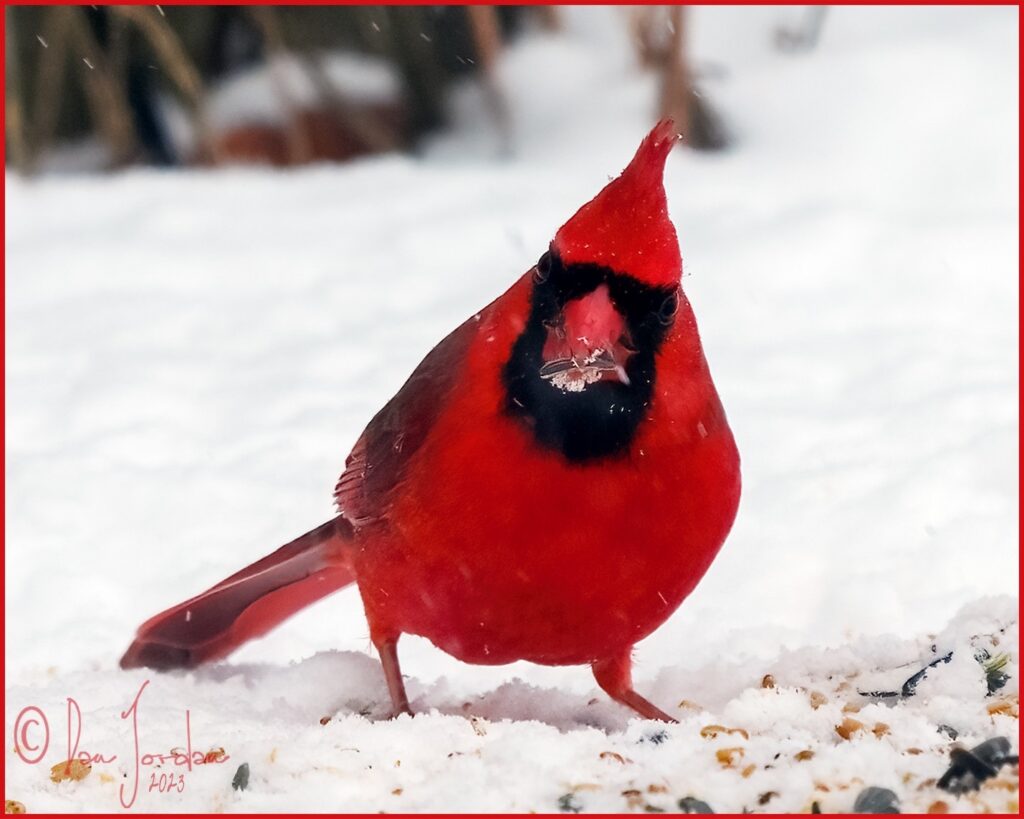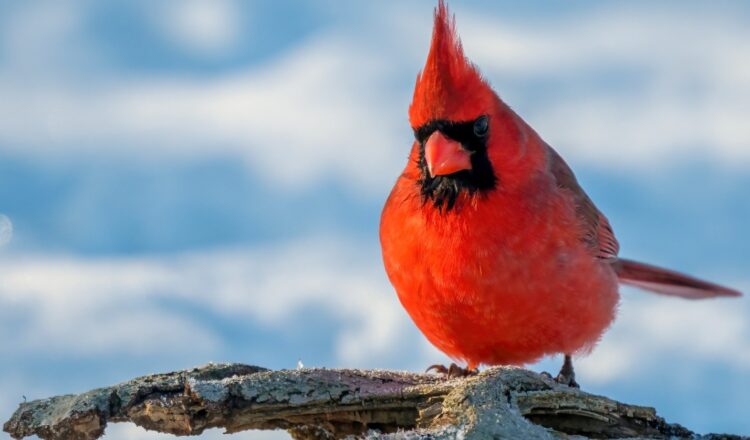Amazing, vibrant photos from one of the best nature photographers in Western NY
By Dan Jordan, Jordan Photography and Consulting
Who doesn’t love cardinals. The males’ colors are so bright and vibrant. And the females’ lipstick beaks! Cardinals are with us year-round and they seem especially colorful in the winter, their colors contrasting with the white snow.
There is much more to northern cardinals than their flashy colors, though. Let me share some facts about one of my favorite photographic subjects:
- Cardinals eat to establish and maintain their colors. Berries and seeds rich in carotenoid pigments create their colors. Carotenoids are also responsible for the coloration of other birds.
- Cardinals live long lives compared to many songbird species. They can live 12-15 years. That said, the average lifespan is probably closer to 5 years, given all the challenges they face in nature.
- A captive cardinal survived to the ripe old age of 28 years 6 months.
- Cardinals as well as many songbirds are preyed upon by falcons, hawks, owls, foxes, domestic cats, among others.
- Northern cardinals are not endangered or threatened. Their population is listed as stable, despite all the predators listed above plus the harsh seasonal weather they face.
- Northern cardinals are typically monogamous. They will retain the same mate for the year, some pairs mate for life, but not all. If a spouse were to die, the survivor immediately looks for a replacement. This is typical in the bird world.
- The northern cardinal is the state bird in 7 states!
- Normally among songbirds, only males sing. However, female cardinals do have a melodious tune they sing during courtship and when calling for food from her mate.
- Cardinals are dutiful parents and will turn vicious if the mate or the nest is challenged.
- I have witnessed cardinals dispatching much large blue jays, when threatened. I’ve often said that the cardinals at our feeders “rule the roost”. They’ve even been known to challenge the squirrels and chipmunks, which the other birds never seem to do.
- Although most males are bright red, there is a genetic variation which shows as bright yellow. These mutations lack the enzyme which converts the yellow color to red in combination with carotenoids.
- Cardinals are granivorous, eating seeds, berries, and grains. They will also eat small insects when presented.
- Cardinal chicks only eat insects!
- Feeding cardinals are most often seen hopping on the ground, foraging for seeds and grains.

During courtship, cardinals are fascinating to watch. The male will often feed the female seeds, in what seem to be very tender moments. I have hundreds of photos of male cardinals depositing seeds into their mates’ beaks, such as this one.

Adult cardinals, as good parents should, also feed their fledglings. The cries of young cardinals wanting to be fed can be heard almost continuously around our feeders. Surely the adult must tire of this begging. Equate it to babies crying when they want something.
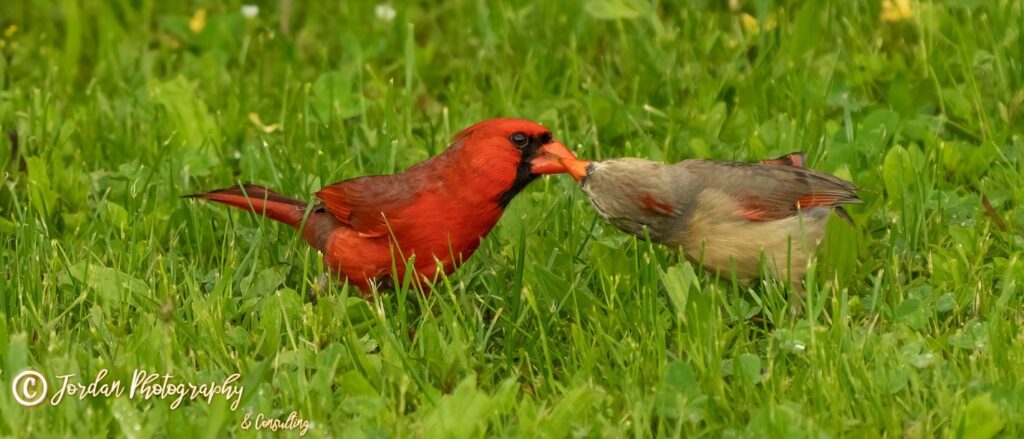
I haven’t mentioned that northern cardinals are dimorphic. I think most everyone by now is used to seeing the female cardinals being less colorful than their mates. That said, there is a natural beauty to the color scheme of the female cardinal. The lipstick beak, the red tail and crest. There is a lot of variation in color among female cardinals, but they all lack the vibrant red color of the males.
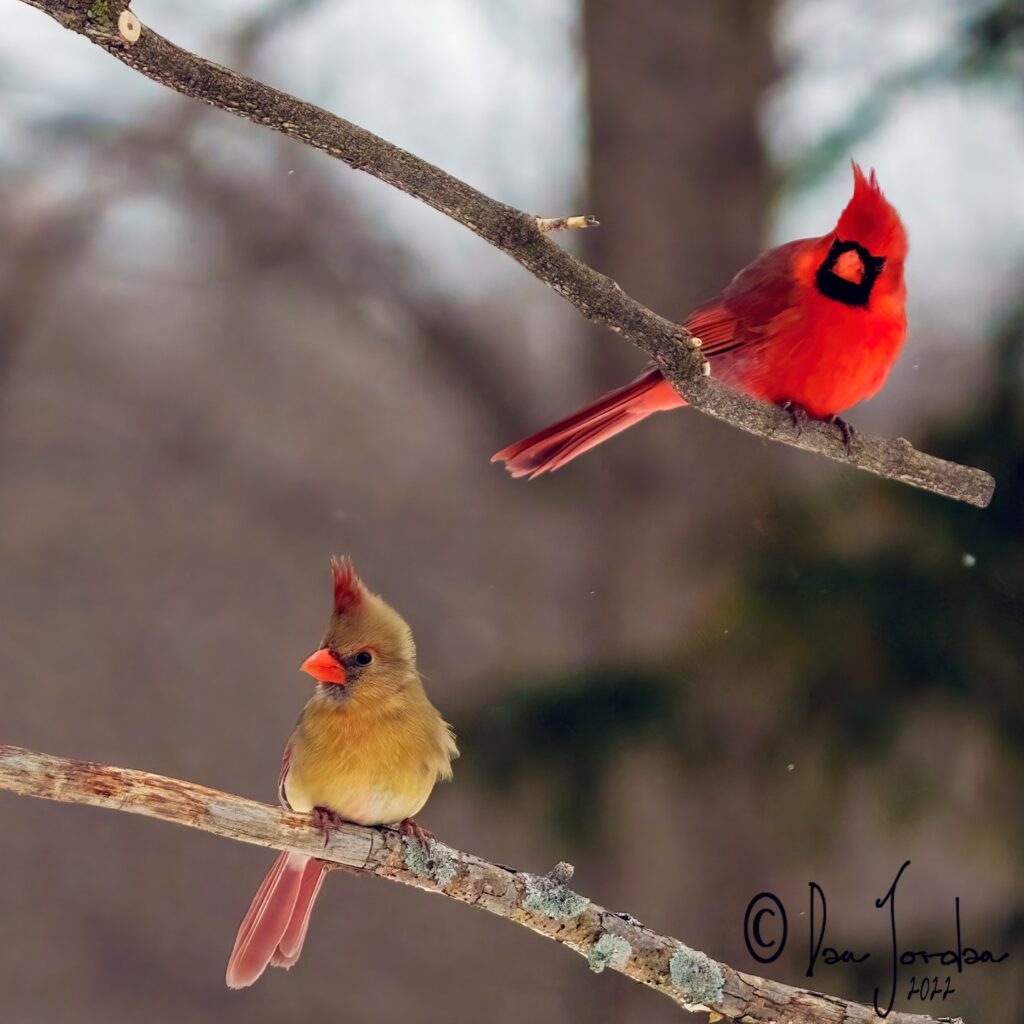
There is a significant amount of variation among the males as well. Some are more vibrant than others, some have more noticable gotees than others, but they’re all red. That is except for the yellow ones!
So, enough of the words, already, let’s get into the photos. I have so many, to pick a handful for this article was a real chore. Enjoy!
A father tending to his fledling.
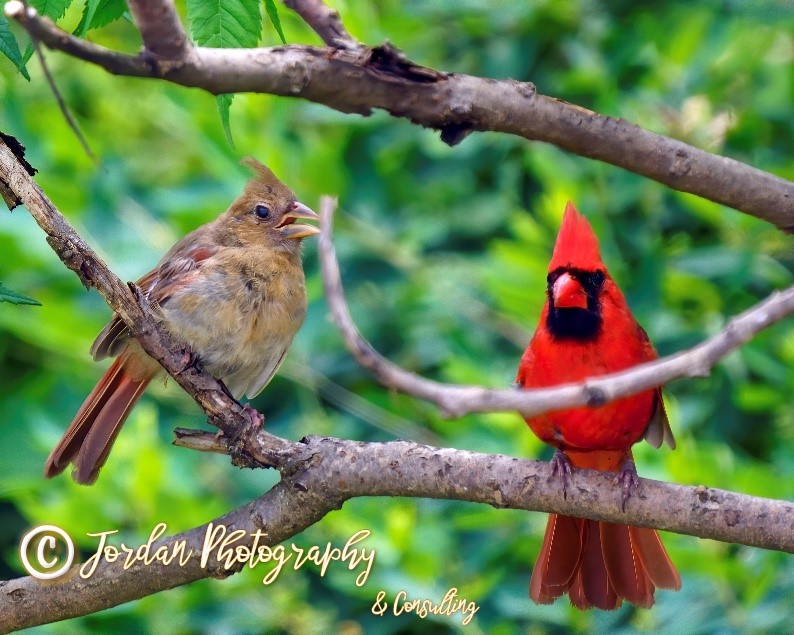
Who needs wings when you can jump long distances?
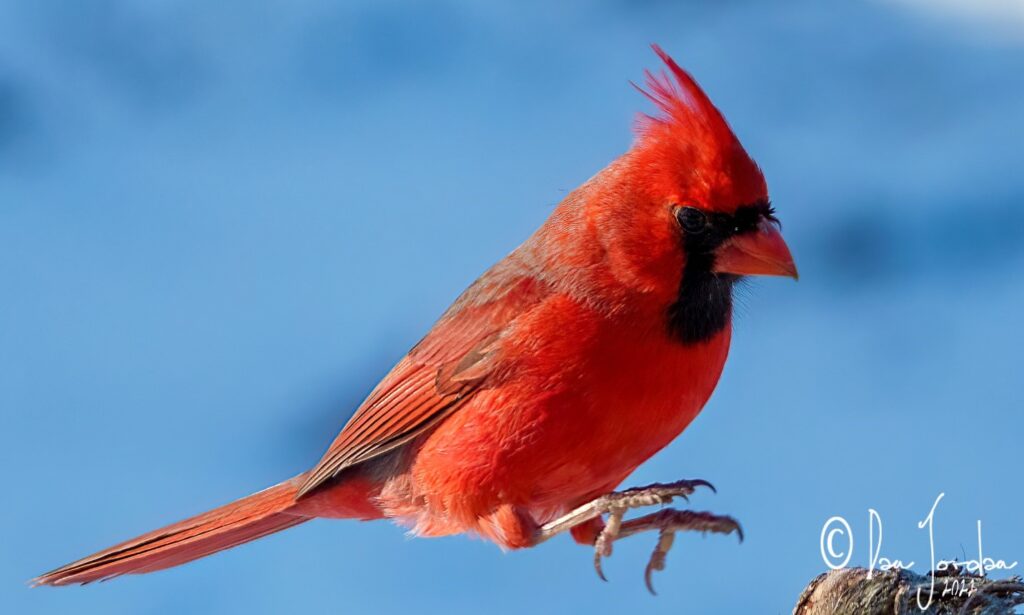
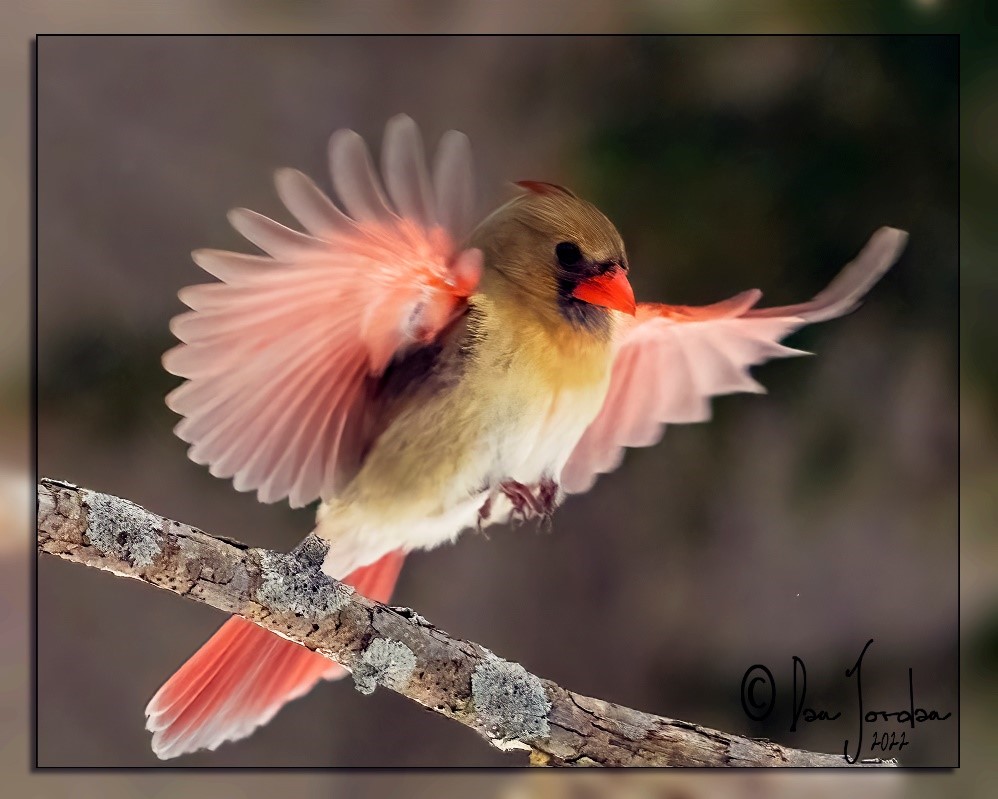
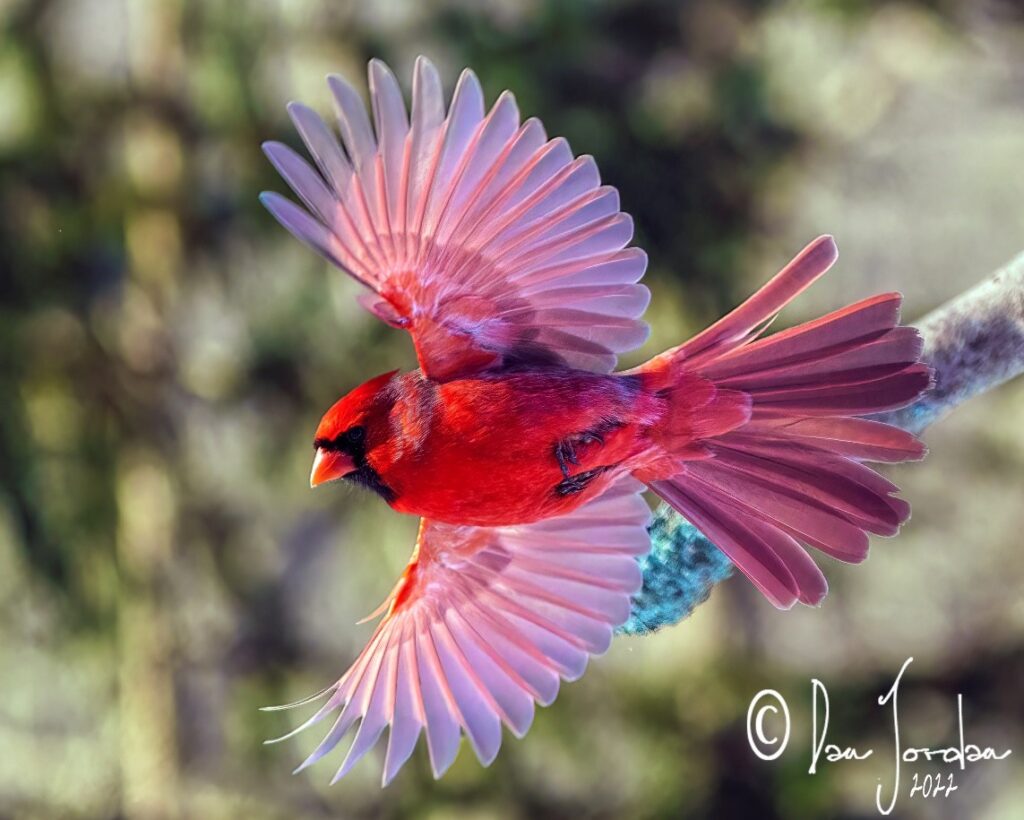
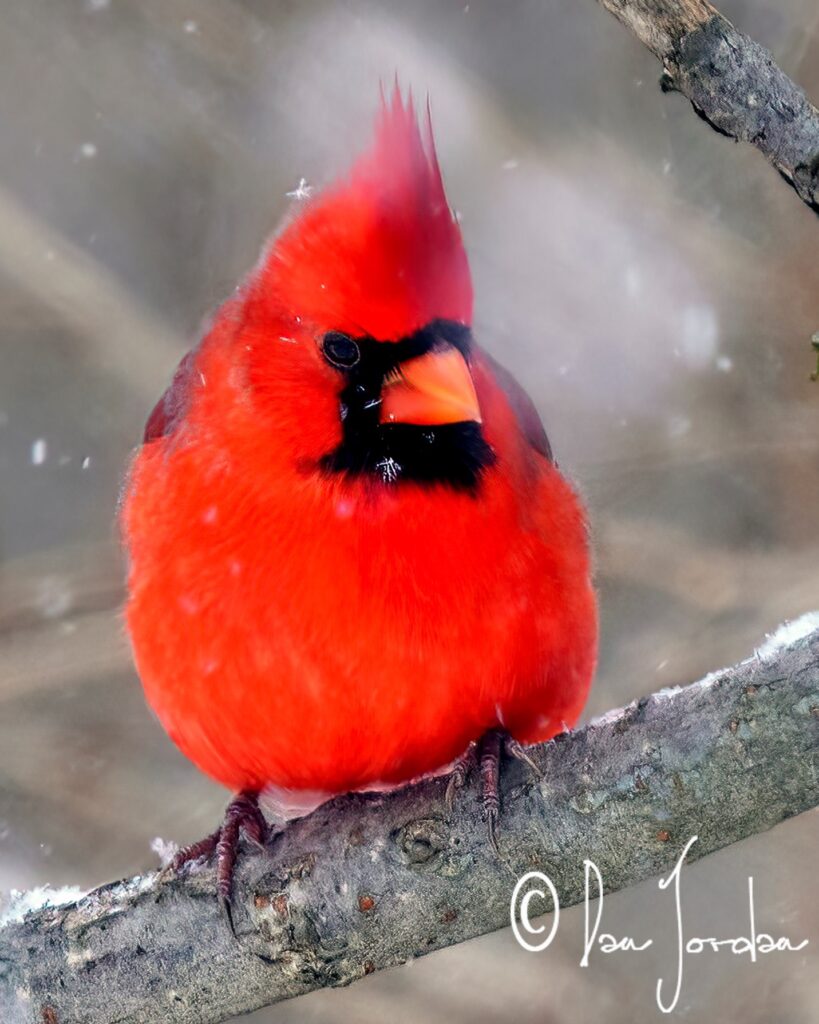

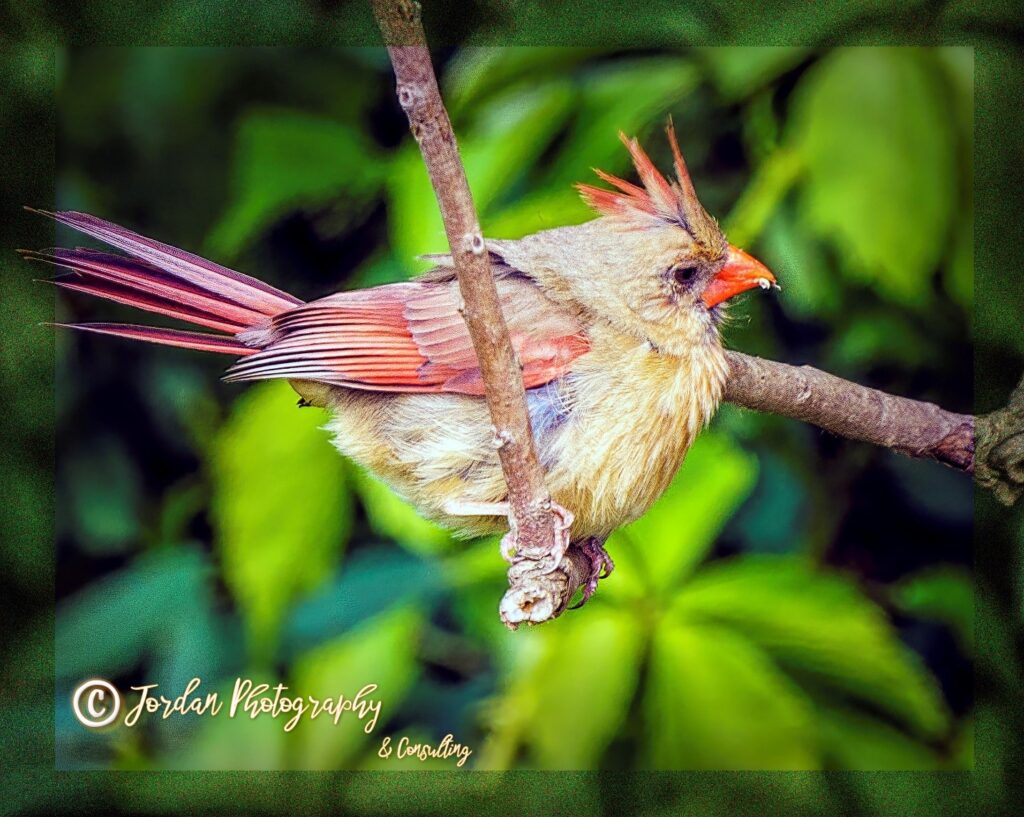
A fledgling, all puffed out.

And finally, a couple of adult males engaged in a territorial battle.
So, as you are out and about and see a northern cardinal, you’ll realize that there is more to these amazing songbirds than pretty colors. Watch closely in the spring for courtship behaviors and several weeks later for fledglings to appear. This is just another reason to enjoy springtime!
But wait! This article was set to go to press but then I had a couple of amazing photo shoots among a number of cardinals. I just had to share a couple of the resultant photos with you, so here goes. Let’s call this the epilogue to the article:
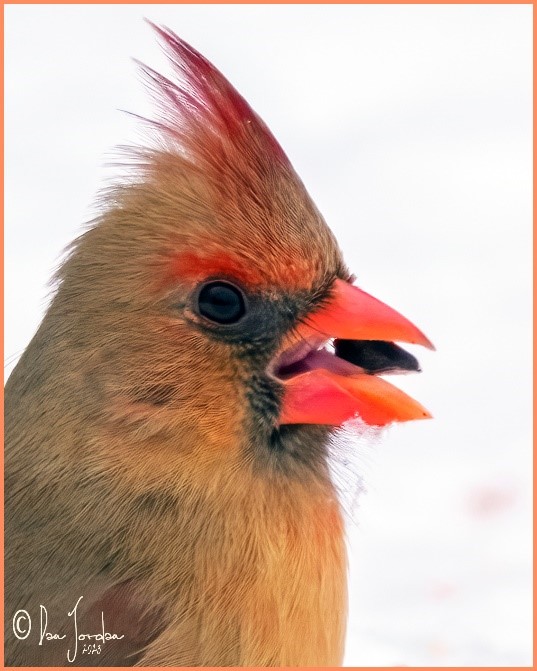
The first shows a female cardinal up close, with a sunflower seed in her beak. Cardinals are skilled at cracking sunflower seeds and getting to the tasty nugget inside using a no-handed approach. Their tongues play a key role in getting the seeds in just the right spot for their beaks to crush it. They then spit out the shells, while their tongues hold on to the edible portion of the seed. Quite entertaining to watch.
The next photo is of a male showing off his brilliant colors.
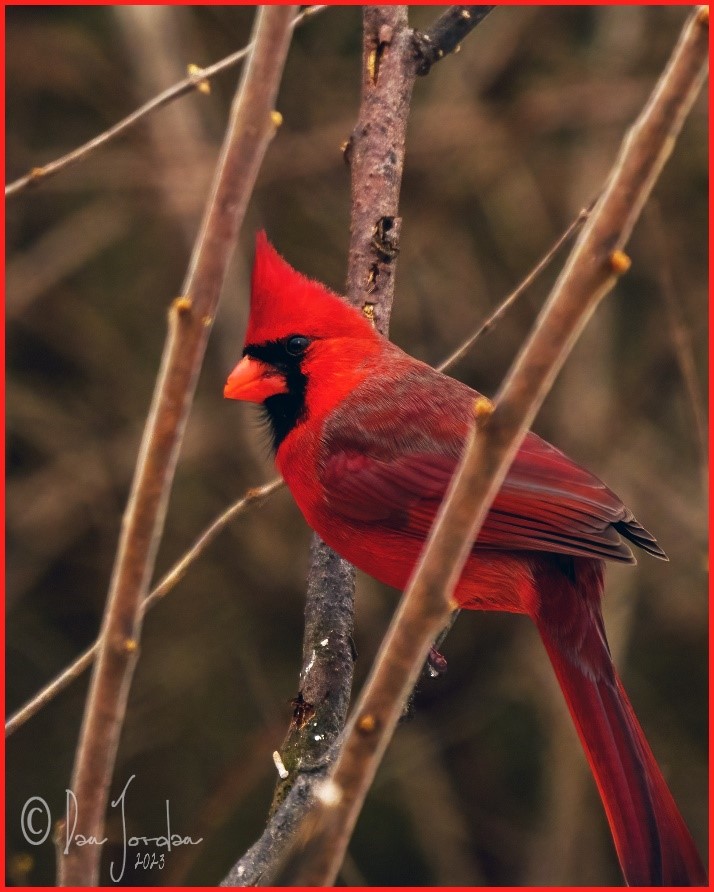
And the last.
